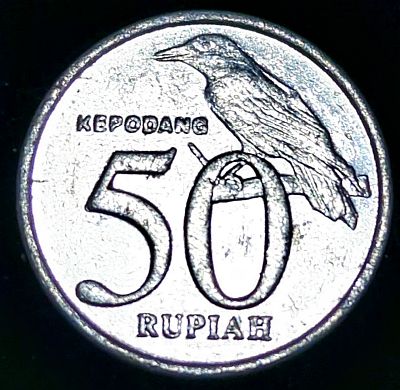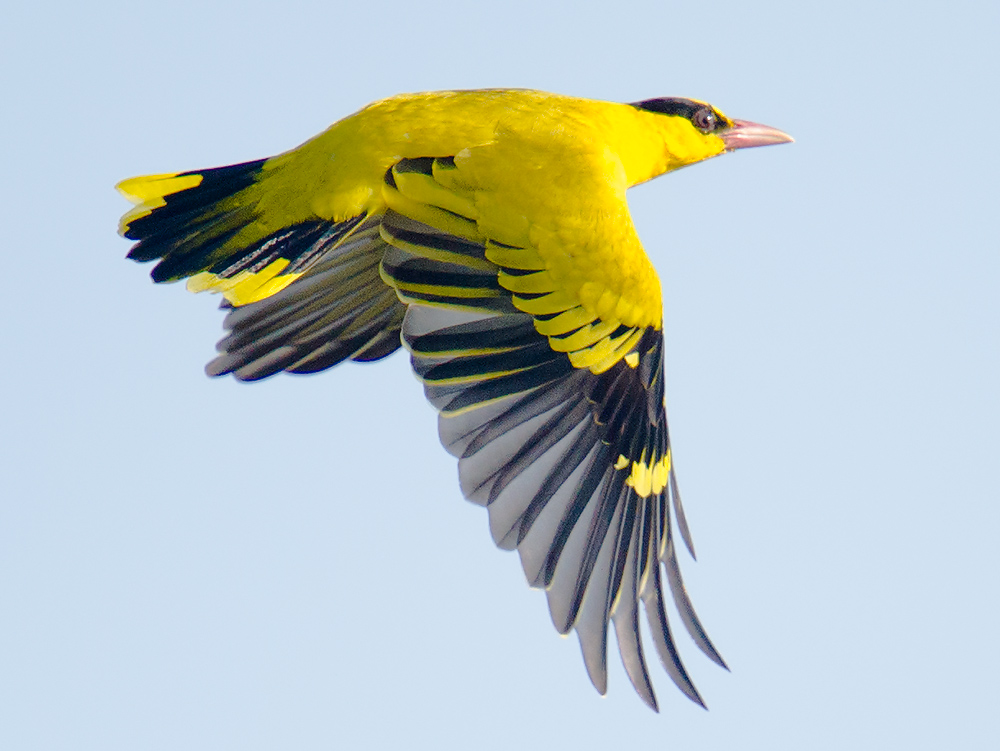A small value coin from the largest single state archipelago.

The country
Indonesia is north of Australia, south of Malaysia & the Philippines, and west of Papua New Guinea & Timor-Leste. Indonesia is the largest archipelago in the world to form a single state. Made up of over 18,000 islands, of which 6,000 occupied with five main islands. It still shares land borders with Malaysia, Papua New Guinea and Timor-Leste. Indonesia also has the largest Muslim population in the world.
The Currency
The Indonesian currency is the Rupia. Technically one Rupia is made up of 100 Sen, the last Sen coins were produced in 1962. ExclusiveCoins has a good discussion on the changing currency in Indonesia in the middle of the 1900s.
Today, one-hundred Indonesian Rupia equals 1 Australian Cent (although Australia stopped making 1 and 2 cent coins in 1991). One Australian dollar is worth roughly 10,000 Indonesian Rupiah. One US dollar is roughly 15,700 Indonesian Rupiah. So, this 50 Rupiah coin, the smallest Indonesian coin currently, is worth about half an Australian cent, or a third of a United States Cent. 0.3 of a Euro cent.
In fact, 50 Rp coins don’t circulate too much anymore. The last 50 Rp coin was minted in 2003. The smallest more recently minted coin is the 100 Rp coin, which is still just under 2/3 of a US cent. Is there a smaller value coin in circulation elsewhere in the world? Yes, several very low value coins in fact. Looks like material for another post! Which very low value coin would you like me to cover? Let me know below!
Reverse (Bird)
Much of the reverse of the coin is taken up by the denomination – 50 with “Rupiah” underneath. Above the value is the word “Kepodang” and a bird. Kepodang translates from Indonesian as “Orioles”. Old World Orioles (to distinguish them from New World Orioles, found in America) are Passerine, or perching birds. The bird on the coin is a Black-naped Oriole. This is a striking yellow and black bird found in forest habitats throughout much of southeast Asia.

Photo from ShanghaiBirding.com.
Obverse
The obverse features the National emblem of Indonesia (Lambang negara Indonesia).

This consists of another bird, the Garuda, a mystical bird originating in Hindu mythology. The bird symbolizes strength. In colour, it is gold, symbolizing splendor. There are 17 wing feathers, the date of the country’s independence. The 8 tail feathers reflect the month of indenpendence, August. The 19 feathers at the base of the tail and 45 on the neck give the year.
There is more symbolism to the bird, the shield and each element on the shield. It is amazing the consideration which has gone into every detail of the emblem. More information from Bogorkab.go.id.
The mint
Indonesian coins are minted by Perum Peruri (short for Perum Percetakan Uang Republik Indonesia, Money Printing Public Company of the Republic of Indonesia). The mint has offices in Jakarta, Karawang and Surabaya. This particular coin was minted at Karawang, West Java, Indonesia.
Perum Peruri was established in 1971 following a merger of state mint Artha Yasa and state printers Pertjetakan Kebajoran (a.k.a. Perkeba).
Mention of the nation’s capital prompts me to insert one last tidbit here, and also to wonder what future holds for the mint in Jakarta. Currently the capital of the country, Indonesia are building a new capital city to replace Jakarta. Due to a number of factors, particularly over-extraction of groundwater, Jakarta is sinking at an alarming rate, which poses a problem to its more than 10 million inhabitants.


Leave a Reply